Optimise Performance
Neuromuscular Calibrate & Train to optimise performance, is designed to help you:
- Recover faster,
- Keep you in the game longer,
- Train and perform to a higher level.
It does this by:
- Calibrating fast changes in recruitment patterns, to optimise function and performance.
- Resolving the dysfunctional patterns from old injuries, that hold you back.
- Enabling quicker recovery between training & playing.

1) Fast changes in recruitment patterns, to optimise function and performance.
– Is your tightness, or reduction in power; a lack of training? Or is it something else?
It is very common in calibration sessions, for comments to be made about immediate changes in:
a) Sensations of tightness.
b) Quality of movement.
c) A sense of improved contraction in muscles.
d) Improvements in power and agility.
We think that tightness has come on from a lack of endurance; and that strength and power needs more training. We think we just need to try harder, to engage those muscles that we are trying to target. Yet a lot of the time, these problems are due to adaptations the brain and nervous system have made, for example:
a) Tightness coming on from a lack of endurance?
Is more training needed? Or could it be? The area is overworking, as a compensation for poor function elsewhere. Calibration of dysfunctional patterns, results in that area not overworking, and not feeling tight. This would see a golfer that felt tight by hole 9, now completing the course, no problem.
b) Cannot engage those glutes/abs/lats etc.
More training? Or? calibration of the compensatory patterns, to allow those muscles to fire. A prime example is being able to more easily engage the glutes, when bridging, squatting, and lifting. Additionally, this is now through following the movement sequencing (e.g. bridge), versus just consciously squeezing them all the time.
c) Sequencing of movement.
Overriding the movement with conscious correction? Or? Use calibration of patterns to correct movement at a subconscious level. E.g. knees buckling in on a squat, or a shoulder popping up on a press.
This can also directly apply to movement in sport e.g. golf; where you want to transfer power through the hips and trunk, but find yourself using your arms too much. Sometimes, this is skill correction; other times the brain/nervous system is guarding, and preventing you from doing this. Calibration allows you to implement the skill, the way you intend it to be.
d) Lack of agility & power.
More training required? Or? Use calibration, and take the protective brakes off, for fluid movement, improved ability to react, and produce power. Power and agility, both rely heavily on timing and recruitment of muscles, versus, the repeated muscular contraction over time, of endurance and stamina. This means, alongside changes in the sensation of tightness and range of motion, changes in agility and power can be experienced in a single session.
2) Resolving the dysfunctional patterns from old injuries that hold you back.
(also see resolve pain page)
When we recover from injury, our benchmark is usually; ‘does it hurt?’
If no, boom! We are back training and playing, sometimes even if it’s still niggly.
- But, have you really recovered?
- Has the function in that area been restored?
- Is the area carrying tension and under performing, because it is compensating for another part of the body, that is non-symptomatic?
The compensatory patterns, the nervous system puts in place to protect us when injured, may need calibrating to fully recover. If not, tolerance may remain low, injuries reoccur, or plateaus are hit in training and playing. Calibration of these old patterns, can kickstart your training, and allow to you to perform to a higher level.
3) Quicker recovery between training & playing:
Simply put, recovery and performance are two sides of the same coin!
Training and sport, places stress on the body, to cause us to adapt and be better. The quicker, and more effectively you can recover and adapt; the more you can train, and perform at a higher level.
The brain and nervous system, initially responds to stress in the form of protection; reducing power and limiting movement i.e. you feel tight, and lose strength. This is most evident with an injury, but in a more minor form, is part of the adaptation to training. These patterns become redundant as you heal, but may remain; preventing a full recovery, and causing plateaus in training and performance.
The quicker these patterns are calibrated, the quicker you can recover, and resume training, or playing.
Whatever you did from your book of spells in the last session was brilliant. I can make it to balls I’d never thought I could get!


